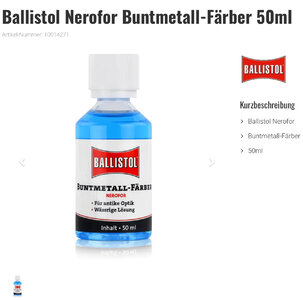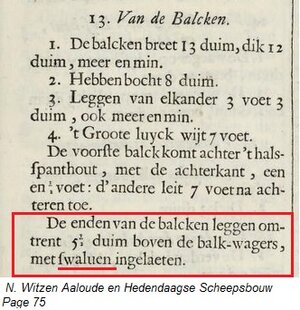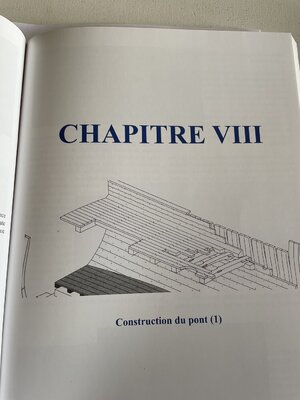
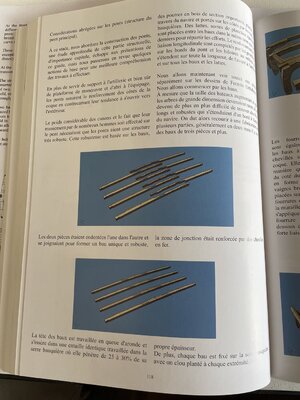
Abbreviated considerations for the bridge (main bridge structure). In this phase, we approach the construction of bridges. An in-depth examination of this important structural part is beyond the scope of this guide, but we will review some basic concepts to better understand the work to be done. The decks not only provide artillery support and, of course, manoeuvring platforms and shelter for the crew, but also reinforce the sides of the hull by counteracting the tendency to open outwards. The considerable weight of the guns and the fact that they are handled by many men on the bridge require the bridges to be very robust. This robustness is based on leases,
wooden beams with a large cross-section that are laid across the ship and supported on the sides by the boathouses. To distribute the forces, battens, thick planks, are laid between the rents in the same direction as the rents. The reinforcement and longitudinal bonding is completed by the gutters at the edges of the deck and the coamings in the centre, which extend along the entire length from front to back and over all the battens and slats. We will now see all these pieces individually in Fermín Urtizberea's drawings. We start with leases. As the size of the ships increased and large trees became rarer, it became increasingly difficult to find long, stable timbers that extended from one side of the ship to the other. We then had to resort to making them in several pieces, generally in two, but there were also hire contracts for three or more pieces.
The two parts were interlocked to form a single and robust structure with the connection area reinforced with iron dowels.
The head of the mouldings is dovetailed and fits into an identical recess in the balustrade greenhouse, where it penetrates 25 to 30 % of its own thickness. In addition, each beam is attached to the beam clamp with a nail hammered into each end.
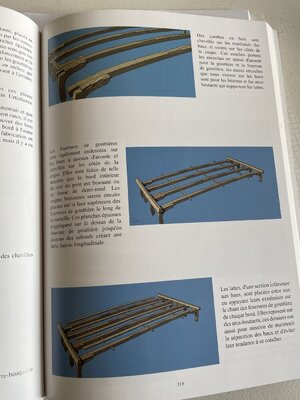
At the ends of the leases and on the sides of the hull are wooden arches pegged down. These curves support the dovetail notches for the gutter and gutter panelling, the other notches we see on the leases are for the coamings and buttresses that support the slats.
The gutter linings are also notched into the interlocking mouldings and dowelled to the sides of the fuselage. They are made so that the inside edge of the bridge side is bevelled or semi-circular. The Breton rails are then attached to the top of the gutter supports along the wall. These thick boards are attached to the top of the gutter panelling at the bottom of the openings, providing a strong longitudinal connection.
The louvres, which are smaller in cross-section than the rivets, are placed between them with their ends resting on the edge of the gutter supports at each edge. They rest on buttresses, the latter also having the task of maintaining the separation of the leases and avoiding their tendency to lie.
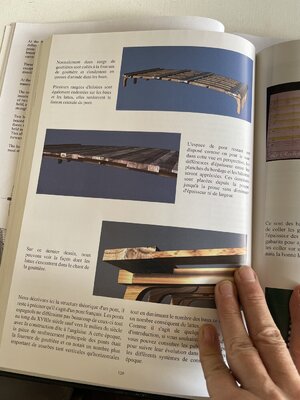
Normally, two rows of guttering are glued to the guttering underlay and fitted into the dovetails of the tenancies. Several rows of coamings are also serrated on the beams and slats; they reinforce the central connection of the bridge.
The remaining deck space is arranged as shown in this perspective view. The differences in thickness between the planking boards and the coamings are clearly recognisable. The latter are placed from the stern to the bow without any reduction in thickness or width.
In this last drawing we can see how the slats fit into the edge of the gutter. We describe here the theoretical structure of a bridge, it remains to be clarified that it is a French bridge. The Spanish pon hardly differed from these throughout the 18th century, except towards the middle of the century with the so-called English construction method. At that time, the main reinforcing part of the bridges was the gutter panelling, and we noticed a greater number of curves, both vertical and horizontal.
reduce Are arches without rger. At the same time, the number of leases is reduced, resulting in a significant number of slats. As these are just a few introductory notes, if you want to delve deeper into the subject, you can consult specialised publications to follow their evolution over time by tracing the different building systems of each era.
Source: Sorolla Modelisme D' Arsenal
I hope the translation is good I had to have it translated from French to English by Dr Google
And here is Gerard's explanation at Le Rochefort.
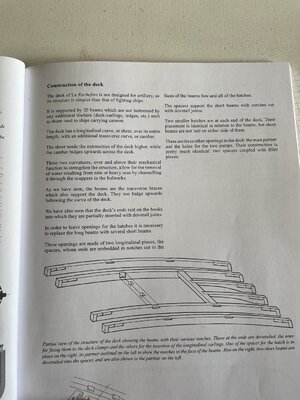
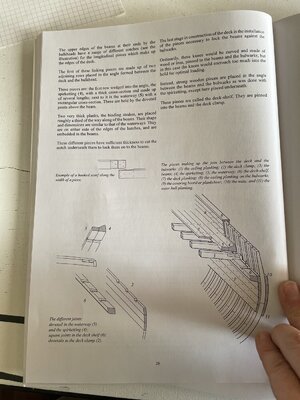




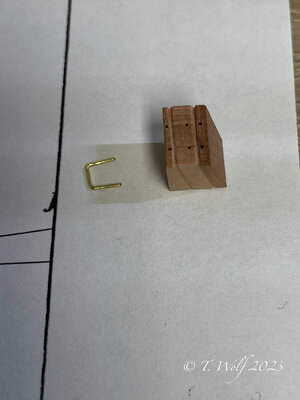
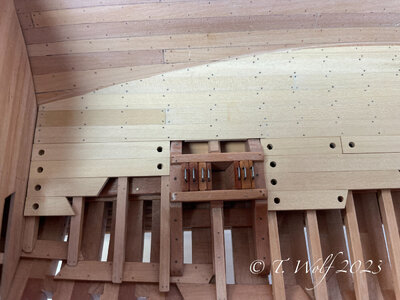
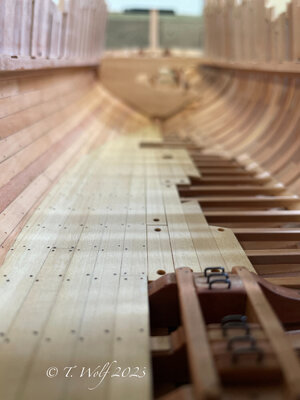
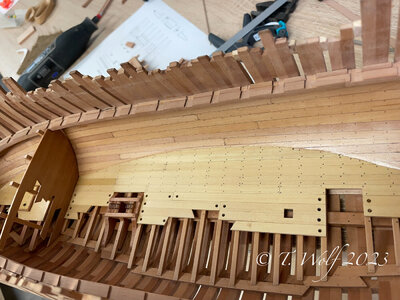
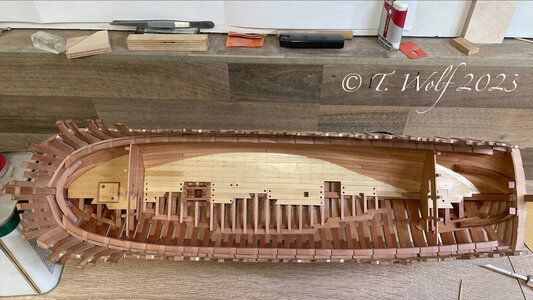
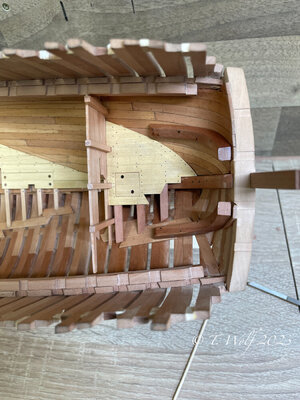
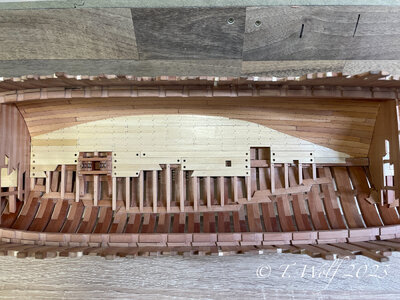
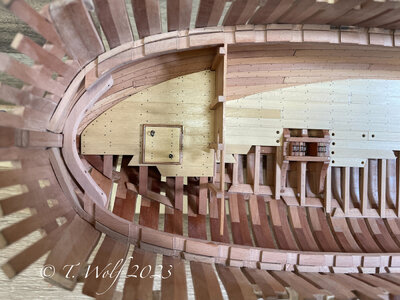
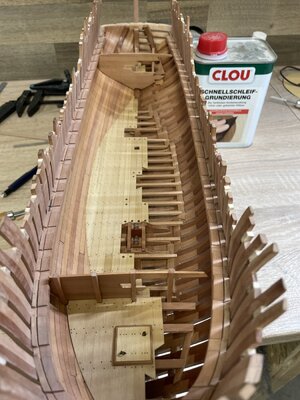
 Question: Does CLOU act as the blackening solution as well? On one image I saw a brass part and then after you have treated it with CLOU it becomes black. I love the 'ironing' effect whatever solution you are using. It is not jet black it is iron blue!
Question: Does CLOU act as the blackening solution as well? On one image I saw a brass part and then after you have treated it with CLOU it becomes black. I love the 'ironing' effect whatever solution you are using. It is not jet black it is iron blue!